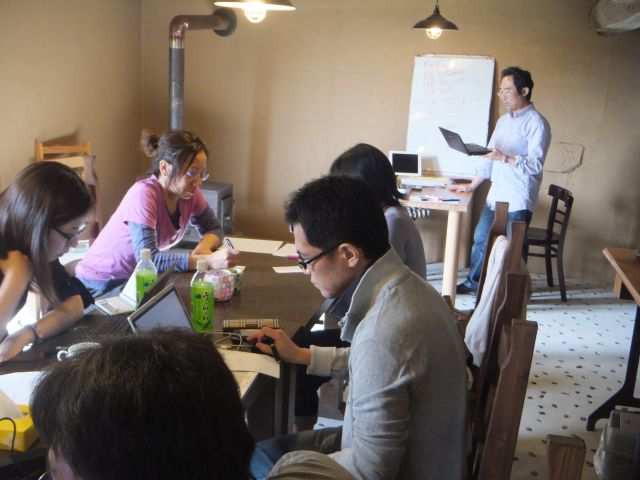GMAT Critical Reasoning、「ロジカル思考」の世界へようこそ!
GMAT Critical Reasoningを勉強中のMBA留学準備生はもちろん、受験生、ロジカル思考、頭の体操、推理小説愛好家、英語読解に興味がある人、挑戦歓迎!

[お題」GMAT Critical Reasoning GcrC-1 04
The chanterelle, a type of wild mushroom, grows beneath host trees such as the Douglas fir, which provide it with necessary sugars.
The underground filaments of chanterelles, which extract the sugars, in turn provide nutrients and water for their hosts.
Because of this mutually beneficial relationship, harvesting the chanterelles growing beneath a Douglas fir seriously endangers the tree.
[Question]
Which of the following, if true, casts the most doubt on the conclusion drawn above?
(A) The number of wild mushrooms harvested has increased in recent years.
(B) Chanterelles grow not only beneath Douglas firs but also beneath other host trees.
(C) Many types of wild mushrooms are found only in forests and cannot easily be grown elsewhere.
(D) The harvesting of wild mushrooms stimulates future growth of those mushrooms.
(E) Young Douglas fir seedlings die without the nutrients and water provided by chanterelle filaments.
ーーーーーーーーーーーーー
[解題]
これも、「Weaken」問題。つまり、「相手(本文)の主張(通常argumentという)を、(最も強力に)論破する(ケチをつける)選択肢を(A) ~(E)の中から選ぶ」のが課題。
まず、「Premise(前提、厳然たる事実として分かってること)」は:
▽
1)The chanterelle, a type of wild mushroom, grows beneath host trees such as the Douglas fir, which provide it with necessary sugars.
chanterelleという野生キノコが、Douglas firのような樹木(ホストは宿主)のもとに生え、糖分のような必要栄養分をもらっている。
(さて、まさかここでchanterelleやDouglas firの役なんか悩んでないよね。(野生ファンなら調べてかまわないけど)文脈からchanterelleはキノコの一種、Douglas firは木の一種、とさえわかればいい。余計なことに労力は使わない)
2)The underground filaments of chanterelles, which extract the sugars, in turn provide nutrients and water for their hosts.
chanterellesの地中のfilaments(これも「菌糸」とか訳さなくても、chanterellesに付属する何かで、十分)が、糖分を吸収し、そのかわりに・お返しに(in turn これは超重要表現。AがBに、BがAに影響を及ぼす場面で多用。ぜひ覚えておこう。後述のmutually beneficial relationshipにつながる)、宿主である樹木に、栄養物と水を提供する。
で、本文の「Conclusion(結論)」は、
(Because of=~なので、という表現で、まとめにかかってる、つまり結論だとわかる)
Because of this mutually beneficial relationship, harvesting the chanterelles growing beneath a Douglas fir seriously endangers
the tree.
chanterellesとDouglas fir はこのような互恵関係(相互依存関係)にあるので、もしchanterellesを採ってしまうと、その宿主であるDouglas fir も危うくなる。
で今回の、我々の課題、「casts the most doubt」(もっとも疑いをいだかせる)は、weakenのこと(このように実質同じことをきいてるのを一瞬で判断できるように) だから、この「Conclusion(結論)」にケチをつける、というもの(A~Eの選択肢で、最も強烈にケチつけてるのは、どれか)。
さて、互恵関係にある一方が無くなると、もう片方も危うくなる、という考えは、何となく感覚的には納得できる。では、それを論破するにはどうしたらいいか。
今回の場合、例えばガーデニングとかに詳しくてピンと来れば(こういったひまたの知識は、CRで結構役立つ。引っかけもあるから、注意は必要だが)
で、ピンとこなければ、選択肢を漁る。
(A) The number of wild mushrooms harvested has increased in recent years.
wild mushroomsの採集は最近増えている。
(wild mushroomsの採集が増えてるということは、もし上記のシナリオで行けば、ますます悪い状態になる)
(B) Chanterelles grow not only beneath Douglas firs but also beneath other host trees.
chanterellesは、Douglas firs以外の宿主のところにもある。
(だから~?これはout of scope)
(C) Many types of wild mushrooms are found only in forests and cannot easily be grown elsewhere.
wild mushroomsの多くは森以外で育たない)
(これもout of scope)
(E) Young Douglas fir seedlings die without the nutrients and water provided by chanterelle filaments.
Douglas fir の苗木は、chanterelleが提供するnutrients and waterがないと死滅する。
(これはむしろ上記の相互依存関係をサポート(よいしょ)してる)
正解
(D) The harvesting of wild mushrooms stimulates future growth of those mushrooms.
wild mushroomsの採集によって、その成長が促進される。
(これならちょっとくらい「採集」したほうがいい。つまり採集することによって、互恵関係の相手も別にまずい状態になるわけではない、ということ。ガーデニングでは、成長を促進するのに「間引き」(茂りすぎてるところを整理する)をするけど、まさにその考え方)

